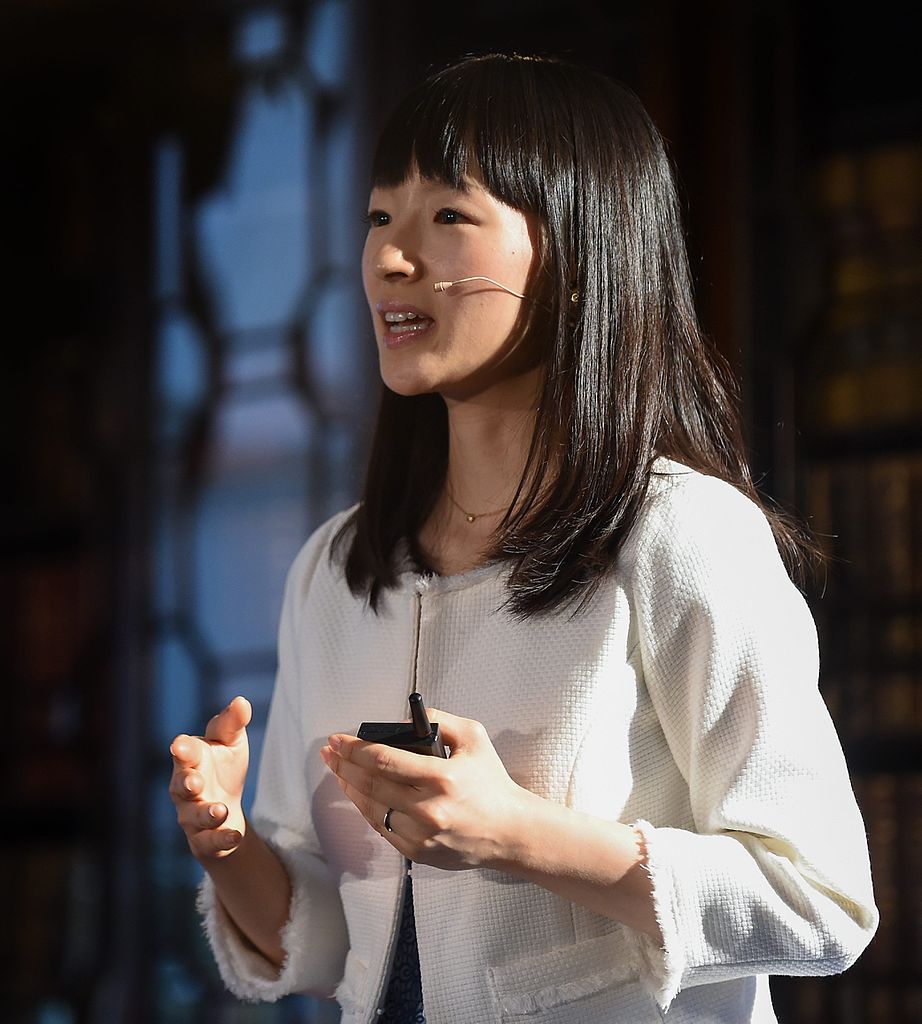Do Your Apps Spark Joy?

 Image from Web Summit via Wikimedia Commons
Image from Web Summit via Wikimedia Commons
What can this tiny Japanese lady teach you about technology?
This is Marie Kondo. She’s become a cultural phenomenon with her book The Life-Changing Magic of Tidying Up and her Netflix show Tidying Up. She created the KonMari method, which is a decluttering strategy where you get rid of anything that doesn’t “spark joy”. You go through each of your belongings and see if it gives you a visceral spark of happiness. If there’s no spark of joy, you thank the item and toss it into the donation bin. The upshot is that you evaluate everything in your life based on whether it makes you happy and helps you achieve your goals. Instead being a slave to your possessions, you have the things you need to live the life you want.
As software continues to eat the world, there’s been a backlash against technology, especially social networks and mobile apps. The common narrative is that nefarious app developers are using advanced machine learning techniques to turn us all into mindless phone zombies.
I find this thinking unsophisticated. I acknowledge there are issues surrounding phone addiction, filter bubbles, censorship, and the toxicity of social media. Social media can cause anxiety and depression, but there’s nothing special about the apps on your phone. It’s no different than TV or any other media. This story is as old as history. Whenever a new form of media comes on the scene, there’s a bunch of people who complain about it. It happened with writing, books, radio, TV, and now it’s happening with the Internet and social media.
Technology is a tool and tools must be used properly. If you cut off your finger with a table saw, it’s not the table saw’s fault. It’s your fault for not using the tool properly. Instead of falling for the hyperbole, make the technology in your life work for you. Apply the KonMari method to your technology life. Go through your devices, apps, and settings and figure out what sparks joy. Instead of being a slave to your technology, make your technology work for you.
I routinely go through my apps, frequently visited sites, and social networks and get rid of the things that don’t work for me. You should also regularly declutter your technology life. The process is simple, first categorize your technology life. I use categories like social media, infinity pools (ie. YouTube), and communication apps. For each category, work through each app or site in your list.
Ask yourself the following questions:
- Does it make me happy?
- Does it help me achieve my goals?
- Can I modify this technology to make me happier or better achieve my goals?
From there, either keep it, delete it, or modify it to better fit your goals. When you’re done, you’ll have a more functional tech life. Here’s some of the choices I’ve made. You’re obviously going to have different needs (and therefore make different choices), but you’ll get an idea of what to do.
Social Media
There are lot of people who think you should immediately nuke any and all social media from your life. At its worst, social media can be a misery inducing time suck. It’s easy to lose hours scrolling on Facebook or Instagram. Not only that, but people tend to post their best moments on social media. They craft posts that portray their life as an amazing fun fest. Your life can’t match up to that hype. If that wasn’t enough, some people use platforms like Facebook and Twitter as emotional dumping grounds. Spewing outrage and vitriol. There’s always some new thing to be angry about. It’s almost never anything important, but the constant cycle of outrage is mentally exhausting.
However, social media isn’t always a dumpster fire. It’s a great way to keep track of your friends, especially ones that don’t live near you. If your core group of friends are on Facebook, you can also use it to plan events. Another advantage of social media is that you can often have conversations with people you otherwise wouldn’t be able to get access to.
Go through each of your social networks and evaluate if being on that network helps you. If you’re not getting any value from the network, nuke your profile. If you get value out of the network, but it’s taking too much of your time, consider removing the app from your phone or turning off its notifications. Most social networks have a web interface that works as well as the app and doesn’t hit you with constant notifications.
Here’s what I found when I evaluated each of the social media networks I was on.
Facebook was a huge time suck for me. I started my account in 2006 back when Facebook was only for college students and would check it several times a day.However, I find it delivering less and less value as time goes on. Several of my friends have left the platform and 95% of what I see doesn’t help me in any way. I recently deactivated my Facebook profile. I may reactivate, but even if I do, I’m still going to go on regular Facebook breaks. At this point, it’s mostly a waste of time, so it gets the boot.
I find Twitter both fascinating and irrepressibly toxic. The toxicity keeps me from spending too much time on the platform, which is almost a feature. I keep my Twitter account because it’s professionally useful to me. I find conferences to speak at and have interesting conversations with other tech people. I make use of blocking and muting to filter out as much outrage as I can, but you can’t get it all. Twitter gets to stay, but I don’t let it notify me and filter a lot.
I use LinkedIn professionally. I check their website occasionally, but it’s not something I use very often. It does what it’s supposed to do, and it doesn’t trigger addictive behavior like other networks.
I tried out Instagram a while ago. The platform is more positive than Facebook or Twitter, but it doesn’t help me in any way. I deactivated my Insta account. It was never a big draw for me, so I’m not really going to miss this one.
I use Pintrest for finding home decorating ideas and woodworking projects. I don’t use it every day, but it’s a good choice for some project inspiration.
MySpace
Yeah no, just kidding…
Infinity Pools
Infinity pools are websites that have infinite content. You can spend endless hours reading, watching, or listening. Infinity pools come in two flavors. The first are media apps like Netflix, YouTube, or Spotify. Out of those three, the big time-suck for me is YouTube. Instead of deleting the app, I put it far away from my main apps in a folder. I also trained the YouTube algorithm to filter out entertaining but useless videos. In your main YouTube feed, you can click “Not Interested”. Do this enough times and YouTube will stop showing you useless videos. After doing this, my YouTube feed is mostly educational videos relating to my career and hobbies, which is exactly what I want.
The other type of infinity pool is news. There’s an infinite stream of news articles on the Internet. I spend a lot of my time reading, but I curate my feed for the best news. I don’t visit time suck sites like Cracked, Buzzfeed, or Mental Floss. I also use RSS feeds to get most of my news. That way, I’m not stuck on someone’s website getting inundated with links. People say RSS is dead, but it’s one of the best ways to get quality news content delivered to you. Another good way to get your news is through newsletters. There are tons of great newsletters that will kindly filter out all the crap, giving you the most important news.
When dealing with news, it’s important to remember that most news is entertainment, not information. How much of the “news” is just reporters reacting to some nonsense they saw on social media? Spend some time filtering out the trash and you’ll be much happier.
Communication Apps
I use email and a bunch of chat apps on my phone. Instead of social media, I talk to my friends directly. I turn down the notifications on most of these apps, especially email. No one needs a response to an email immediately. Go through each of your communication apps and think about whether they need to be on your phone and if you need their notifications. Delete what you don’t need and turn down the rest. Chat apps are asynchronous, take advantage of that fact.
Things to Add
After deleting the apps and accounts that don’t improve your life, consider adding in some apps that will. There are hundreds of apps that can support your goals. Find them and use them. Give helpful apps a prominent place on your home screen. Here’s a few apps that I use to help foster healthy habits and enjoyment.
Strong – Strong is a workout tracker for weightlifters. You can enter your routine and it’ll help you keep track of your weight lifting goals. There are equivalent apps for runners, but I don’t run, so you’ll have to find those yourself.
Zero – Zero is an intermittent fasting tracker. It’s easy to use and free.
Oak – Oak is a free app that has breathing exercises and guided meditations. My kid is a big fan of the “box breathing” exercise.
Done – Done is a habit tracking app that helps foster healthy habits.
Audible and Overcast – I listen to audio books and podcasts all the time. It’s an easy way to get more “reading” and learn while doing mundane activities like housework or commuting.
Trello and OneNote – I use Trello and OneNote to organize thoughts, projects, and to-do lists. Both of these apps are fantastic and I use them all the time.
It’s Time to Declutter Your Tech Life
It’s time to take a flamethrower to your digital clutter. Go through your digital life and evaluate the apps, social networks, and sites you use. Think about which ones help your life and which ones don’t. You are not a slave to your technology. Your technology works for you. If that app or service doesn’t “spark joy”, then either modify it so it does or send it to the bit bucket.